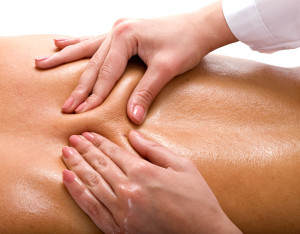What is massage?
Massage is the manipulation of skin, muscles, tendons and ligaments by pressing and rubbing. A massage therapist will use their fingers, palms and hands to apply the pressure and stroke.  They may even use their elbows, forearms and possibly their feet to apply the manipulation.
They may even use their elbows, forearms and possibly their feet to apply the manipulation.
Early evidence of massage therapy dates back to Mesopotamia (c. 3100 BC). Mesopotamia is considered the cradle of civilization. From Mesopotamia, to a picture representing massage therapy on the Tomb of Akmanthor in Egypt (c. 2330 BC), to recordings in Traditional Chinese Medicine (c. 722 – 481) and the Sanskrit records of India (c. 500 – 50), massage therapy has been practiced.
Massage therapy is fairly new to the United States having been introduced by two New York physicians during the 19th century. By 2014, massage therapy has become roughly a $12 billion industry in the U.S. with approximately 33 million adults having at least one massage between July 2013 and July 2014. “According to the U.S. Department of Labor in 2012, employment for massage therapists is expected to increase 23 percent from 2012 to 2022, faster than average for all occupations.”
Massage therapy is an effective treatment for reducing muscle tension and cramping, depression and anxiety; pain management including that produced by migraine headaches. It improves circulation by moving nutrients and oxygen into the tissues and vital organs; as well as, stimulates lymph flow and reduces localized swelling thereby enhancing the immune system. Massage therapy is also beneficial in alleviating low-back pain and increasing joint flexibility. It improves sleep quality, mental concentration and helps alleviate cancer-related fatigue. Hospitals are using massage practitioners as an adjunct to the postsurgical recovery process and pain management. Businesses, airports and clinics are offering access to massage practitioners as well.
It improves sleep quality, mental concentration and helps alleviate cancer-related fatigue. Hospitals are using massage practitioners as an adjunct to the postsurgical recovery process and pain management. Businesses, airports and clinics are offering access to massage practitioners as well.
Some common types of massage are:
• Trigger point massage that focuses on tight muscles fibers that have been injured or overused.
• Deep massage that works on damaged muscles by using more-forceful strokes to reach deeper muscle layers and connective tissue.
• Swedish massage or “classic massage” is the most common type that uses long gentle strokes, deep circular movements, kneading and tapping to relax you. This technique has shown to be useful in pain reduction and joint stiffness.
• Sports massage or manipulative therapy that’s used to prevent or treat injuries due to sport activities. Similar to Swedish massage. It includes kneading and manipulation of muscles, joint manipulation and joint mobilization.
There are many types of oils used for lubrication. Some common types are coconut oil, olive oil, jojoba oil, sesame oil, pecan oil, grape seed oil and baby oil.
So try a massage, you may find yourself waking up after a most peaceful and relaxing session!
Massage is not recommended for people with bleeding disorders, deep vein thrombosis, those taking blood thinners or have damaged blood vessel, bones weakened by cancer, fractures or fever.
Click here to find a massage therapist near you.
Click here to review post references.
Click here to return to post on Eight Habits.
For my next post, we will look at eight habits we can do for a more happy and healthy life.
If you would like to share your comments about this post, then please contact me at myorigins@kenpledger.com or leave a comment below.
If you found the information helpful, please share with your friends and family.